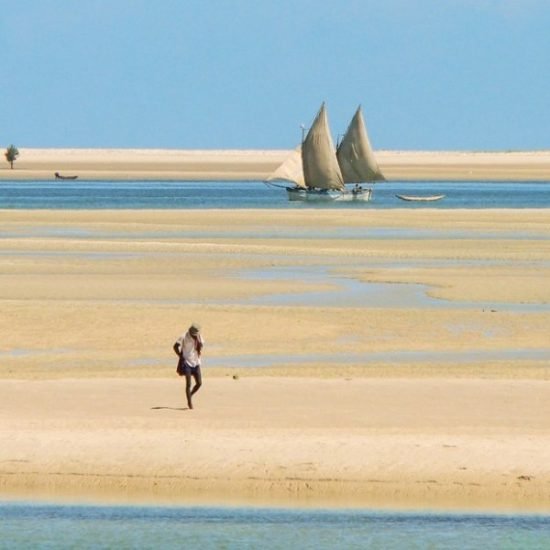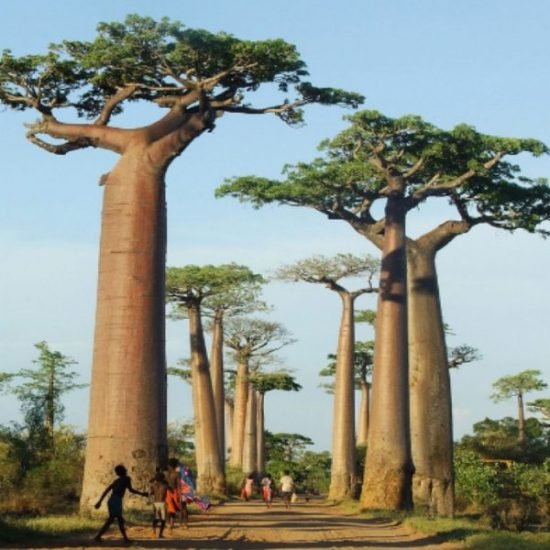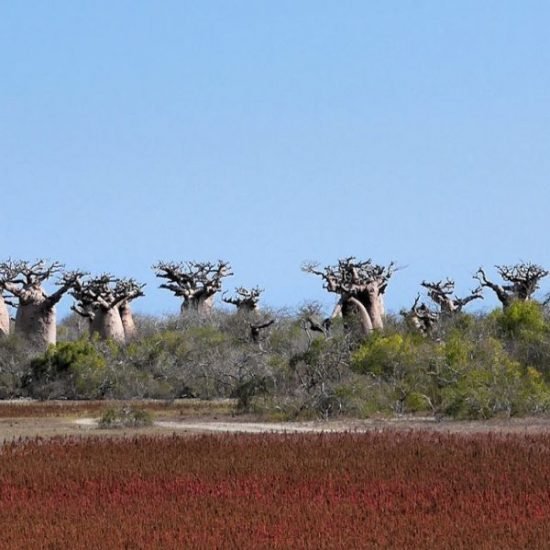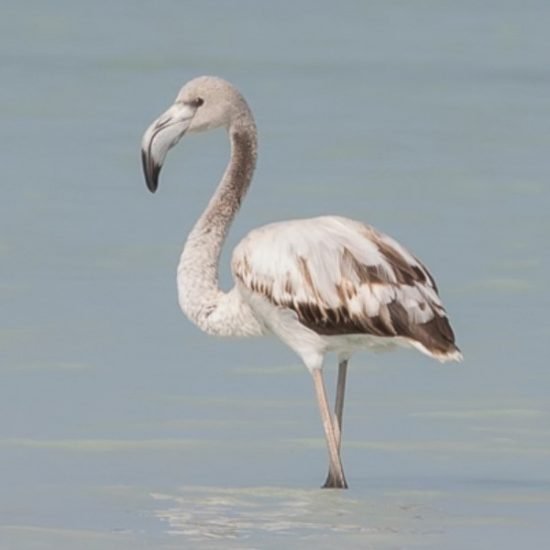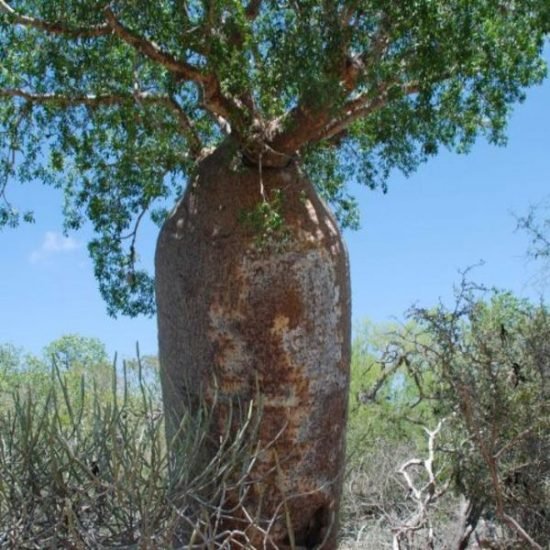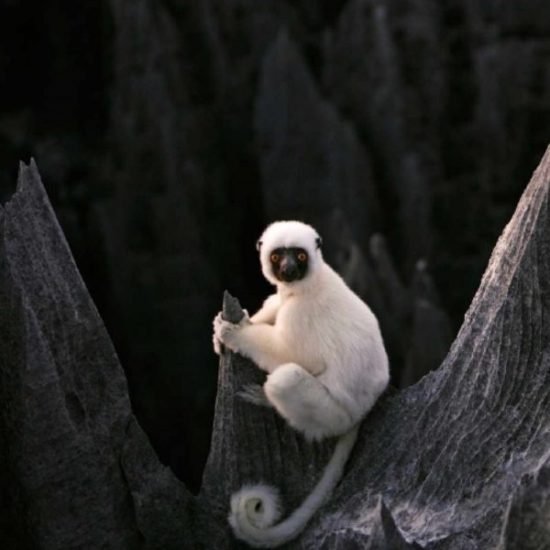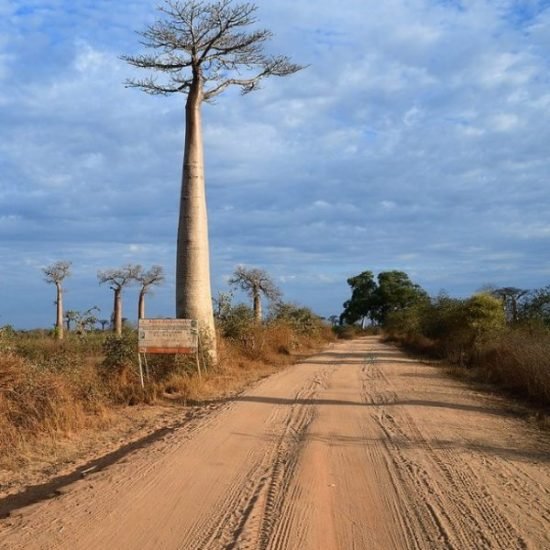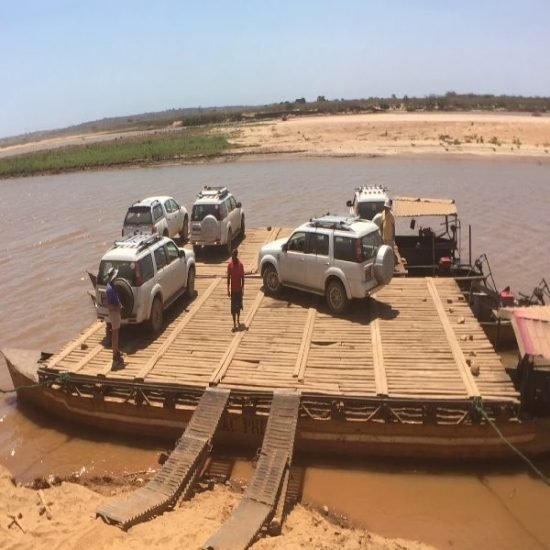The Great South and the Tsingy
€2500 per person
An incredible three weeks private from Fort Dauphin to visit Lokaro Bay, Andohahela National Park, the Reserve of Berenty and the southernmost point of Madagascar, Cap Saint Marie. Then we will visit the Tsimanampetsotsa National Park and spend few days in Anakao. After spending 2 more days in Ambatomilo, we continue along the coast to Belo sur Mer and Morondava to see Baobabs Avenue. Then, the Tsingy de Bemaraha National Park to drive back to Antananarivo.
Prices per person
- 1 Traveler €5800, 1 single
- 2 Travelers €3650, 1 tw/dbl
- 3 Travelers €3100, 1 tpl
- 4 Travelers €2800, 2 tw/dbl
For more options, please contact us
21 Days
1
Day 1 Fort Dauphin
Domestic flights to Fort Dauphin depart in the morning from Antananarivo to arrive by midday. Meet & Greet at Fort Dauphin airport and transfer to the hotel. Early in the afternoon we visit Nahampoana reserve. Located a few kilometers north of the city, it is a lush forest composed of unique tropical plants, with a beautiful mountainous background, home to many species of lemurs including the sifaka, the maky, bamboo lemur and the "small" microcebus (nocturnal). Back to FD. Hotel Talinjo or similar.
2
Day 2 Fort Dauphin - Lokaro - Fort Dauphin 80 km, 1 hour drive and 3 hours motor boat ride
Today we will visit the beautiful Lokaro Peninsula, located about 40 km north of Fort Dauphin. We will reach the creek of Sainte Luce on a small motor boat. If this area is not an earthly paradise, we are close to it: splendid beaches of fine white sand; rocky islets whose shadows reflect on the shallow turquoise waters; pristine coastal forests; lush hills; inland waterways hidden by tropical plants; natural pools surrounded by palm trees and unforgettable views. We return to FD by mid afternoon, in time for a short city-tour that end by the beautiful Libanona beach. Hotel Talinjo or similar.
3
Day 3 Fort Dauphin - Berenty 80 km, 4 hours' drive
We begin the trips on along the coast of Madagascar, our first stop for the day is Andohahela National Park. The park covers 760 square kilometers of the Anosy mountain range, the southernmost spur of the Malagasy plateau. These mountains form a natural barrier for the humid trade winds that blow from the east. In fact, the rain on the eastern side (facing the sea) exceeds 2000 mm per year, thus giving life to one of the last rainforests south of the Tropic of Capricorn. Instead, on the western side of the park, the rain is only about 600 to 700 mm. Thanks to this small micro-climate, within a few kilometers, we can go from rainforest to a dry thorny forest, a unique characteristic of southern Madagascar. In the area between these two climatic extremes we will find the "transitional" forest of Ranopiso, where we can admire the endemic triangular palm Dypsis decaryi and different species of baobabs. Andohahela National Park is "home" for 12 species of lemurs; 129 bird species, 69 reptile species and 49 amphibian species. Our circuit will give us the opportunity to meet some lemurs and many other small local creatures but above all, we will explore the beautiful and unique mini-ecosystem consisting of rainforest and dry thorny forest. After the visit, continue by car to the west, Berenty Reserve is about 3 hours away. After sunset, we will tour the reserve in search for nocturnal wildlife. Hotel Berenty Lodge.
4
Day 4 Berenty - Lavanono 180 km, 6 hours' drive
In the morning, we will take a guided tour of Berenty reserve. Most of the TV programs on Madagascar show the "troops" of the ring-tailed lemurs walking with their tails in the air and the white sifaka dancing left and right. All of this is filmed in here. The de Heaulme family, owners of the reserve, founded a sisal plantation in 1936 next to the Mandrare river in agreement with the local clans of the Tandroy tribe. Berenty reserve includes a small forest of ancient tunnel-planted tamarind trees that form a kind of canopy and the surreal “thorny forest” of southern Madagascar. There are 6 species of lemurs, the largest colony of southern Madagascar fruit bats, and 103 species of birds, 56 of which nest in the reserve. Lemurs around here are very friendly. We will also visit the local museum and the sisal plantation. Before noon we begin the journey to the west again, with destination Lavanono, where we will spend the next two nights. Hotel Chez Gigi or similar.
5
Day 5 Lavanono - Cap Saint Marie - Lavanono 80 km, 4 hours' drive
After breakfast we take the coastal road to the east to visit the special reserve of Cap Sainte Marie, the southernmost part of Madagascar. We will discover a botanical garden where the remains of the eggs of the giant bird Aepyornis (a species of ostrich weighing over 400 kg), which lived in these parts hundreds of years ago. We will also see the typical thorny forest of the south, coastal dunes and an underground cave that is home to over 3,000 turtles of 3 different species. If in season, from August to November, we can also admire the "parades" of humpback whales. After the visit, we will return to Lavanono to spend the rest of the day by the beach. Hotel Chez Gigi or similar.
6
Day 6 Lavanono - Itampolo 270 km, 8 hours' drive
We continue driving west towards Itampolo. We will travel along winding roads of sand and rocks in the driest area of the country. The journey takes about 8 hours, it will be dusty, hot and hard but the unique landscape with its flora will reserve us unforgettable views. We will arrive in Itampolo in the late afternoon. Itampolo, is a small fishing village with a truly exceptional beach, where we will spend the little that remains of the day to admire the magnificent sunset. Hotel Sud Sud or similar.
7
Day 7 Itampolo - Beheloka 80 km, 3 hours' drive
After breakfast we travel northward along the western coast to reach Tsimanampetsotsa National Park. The park that attracts more scientists than tourists, due to its location, far from the tourist "routes" and its rich biodiversity. We will see sacred caves, ancient baobabs, Pachypodiums, banyan trees with beautiful parrots, turtles, lemurs, and above all, from April to October, hundreds of pink flamingos on a blue salty lake (saturated with sulfate). More than 75% of the flora and fauna of Tsimanampetsotsa park are endemic. After the visit, we reach the small fishing village of Beheloka where we will spend the rest of the day by the beach. Hotel Domain d'Ambola.
8
Day 8/9 Beheloka - Anakao 50 km, 2 hours' drive
Departure in the morning north to Anakao, the largest fishing village of the Vezo people, with its long white beaches of fine sand and crystal clear blue sea. We will spend the next two nights in Anakao, so be prepared to relax and enjoy. For day 9th, we visit Nosy Ve, an islet off the coast (4 km) of Anakao. Nosy Ve is a sacred place for the Vezo people, where every year the locals sacrifice zebu according to traditional rituals. The island is home to a breeding of red-tailed fetons, which attracts ornithologists from all over the world. With excellent sightings of these birds, along with stunning white beaches and excellent snorkeling, this island visit will be an unforgettable part of the tour. Hotel Safari Vezo or similar.
9
Day 10/11 Anakao - Toliara - Ambatomilo 150 km, 5 hours drive + 1 hour ferry
Departure by ferry scheduled early in the morning to reach Tulear, the largest city in southern Madagascar. After about 60 km of paved road, passed Ifaty and Mangily, we turn towards the coast to take the most spectacular track in Madagascar. The road is literally the separation between the dunes to the left and, the incredible Mikea spiny forest, one of the largest of its kind in the world. We arrive in Ambatomilo in the middle of the afternoon. Ambatomilo has arguably the best beach in Madagascar, fine white sand and turquoise sea. In Ambatomilo we spend the next 2 nights. Hotel Shangri-La Lodge or similar.
10
Day 12 Ambatomilo - Morombe, 90 km, 6 hours' drive
We leave in the morning Ambatomilo to reach Morombe, our next stop. It will be a tough drive in some of the most beautiful and wild environment Madagascar has to offer: a very deep sandy road; remote villages; endless savanna of ancient baobabs up to a thousand years old. Morombe is a fishing town where time seems to have stopped in the 60s when Morombe was an important town famous for lima bean. Today, its streets, built in the fifties, have completely disappeared, left with small pieces of asphalt built by the French. There are also few rusty warehouses, a sign of the rich past. Hotel Chez Katia or similar.
11
Day 13 Morombe - Belo sur Mer 260 km, 12 hours' drive
Really hard day ahead, we need to reach Belo sur Mer crossing rivers, savanas and salt plains. Halfway through the trip, we reach Manja, the ancient capital of Sakalava people. We will stop in Manja for a lunch break. Arrival in Belo sur Mer is expected after sunset. Hotel Ecolodge du Menabe or similar.
12
Day 14 Belo sur Mer
Today we will spend the day at sea. The main attraction of Belo-sur-Mer is Nosy Andrahovo, a series of islands lined with fantastic coral, some semi-submerged. The islands are uninhabited and offer fabulous snorkeling. Hotel Ecolodge du Menabe or similar.
13
Day 15 Belo sur Mer - Kirindy 160 km, 7 hours' drive
In about 4 hours of very we will pass the famous Avenue of the Baobabs. It is a series of incredible giant baobabs over 30 meters high, lined up along the road leading to Belo sur Tsiribihina. 60 km later, we will arrive at our destination, near the Kirindy Private Reserve. Time for a short break, to prepare for a night visit to this extraordinary reserve. The reserve includes one of the most important habitats in Madagascar: the dry deciduous forest. Dominated by majestic baobab trees, this protected area reaches approximately 100 square kilometers. Kirindy is the best place on the island to observe the fossa, especially during the mating season between October and December. It is also home to seven species of lemurs. The most common are the common brown lemurs and Verreaux's sifaka. Hotel Relais du Kirindy.
14
Day 16 Kirindy - Bekopaka 140 km, 6 hours drive with 1 hour ferry
In the morning a new visit to the Kirindy Reserve. By 9 AM we hit the road again. In two hours of travel, we reach the Tsiribihina River. With the use of a primeval but safe barge we reach Belo sur Tsiribihina, where we stop for a lunch break. At 1 pm we are again on our way for the last winding 110 km of track to the Manmbolo river. The landscape is made up of arid plains where few bushes, palms and baobabs emerge. We cross the Manambolo river on a barge, this time the crossing will only last 5 minutes. We arrived in Bekopaka. Hotel Olympe du Bemaraha or similar.
15
Day 17 Bekopaka
In the morning, after breakfast, we will visit the Tsingy de Bemaraha, a national park listed on the UNESCO list as a world natural heritage. The Park is famous for its labyrinth of limestone formations that reach up to 50m high. Please note that the entrance of the park is situated at about 2 hours' drive from Bekopaka. During the excursion we will find several species of endemic animals and plants of Madagascar. Our circuit will last approx. 4/5 hours. A medium level of fitness is expected, there are points where you have to crawl and points where some may suffer from vertigo. To conclude, good mobility is required. Hotel Olympe de Bemaraha or similar.
16
Day 18 Bekopaka - Morondava 230 km, 8 hours' drive and 1 hour ferry
We leave Bekopaka after breakfast, we have about 8 hour to reach Baobabs Avenue to admire the most spectacular sunset. We then continue to Morondava. Hotel Laguna Beach or similar.
17
Day 19 Morondava - Antsirabe, 500 km 10 hours' drive
Time to leave the coast to reach the highlands. Antsirabe is our next stop and the whole day will be dedicated to travel. Hotel Plumeria or similar.
18
Day 20 Antsirabe - Antananarivo 180 km, 4 hours' drive
Antsirabe is the third largest city in Madagascar and thanks to its high altitude (around 1 500m) the temperatures are quite cool in winter! The climate was probably the reason why the Norwegian missionaries chose this place to settle in 1872. Its name means "where there is a lot of salt" and due to its large number of hot springs the city has the nickname of "Malagasy Vichy. ". On a rickshaw we will visit the main market, the semi-precious stone markets and some local artisans (silk and zebu horn processing). After lunch, we will begin the last stretch of road that separates us from the capital. We will arrive in Antananarivo for the late afternoon. Hotel Combava or similar.
19
Day 21 Antananarivo
Our last service is the transfer to the airport of Ivato.
